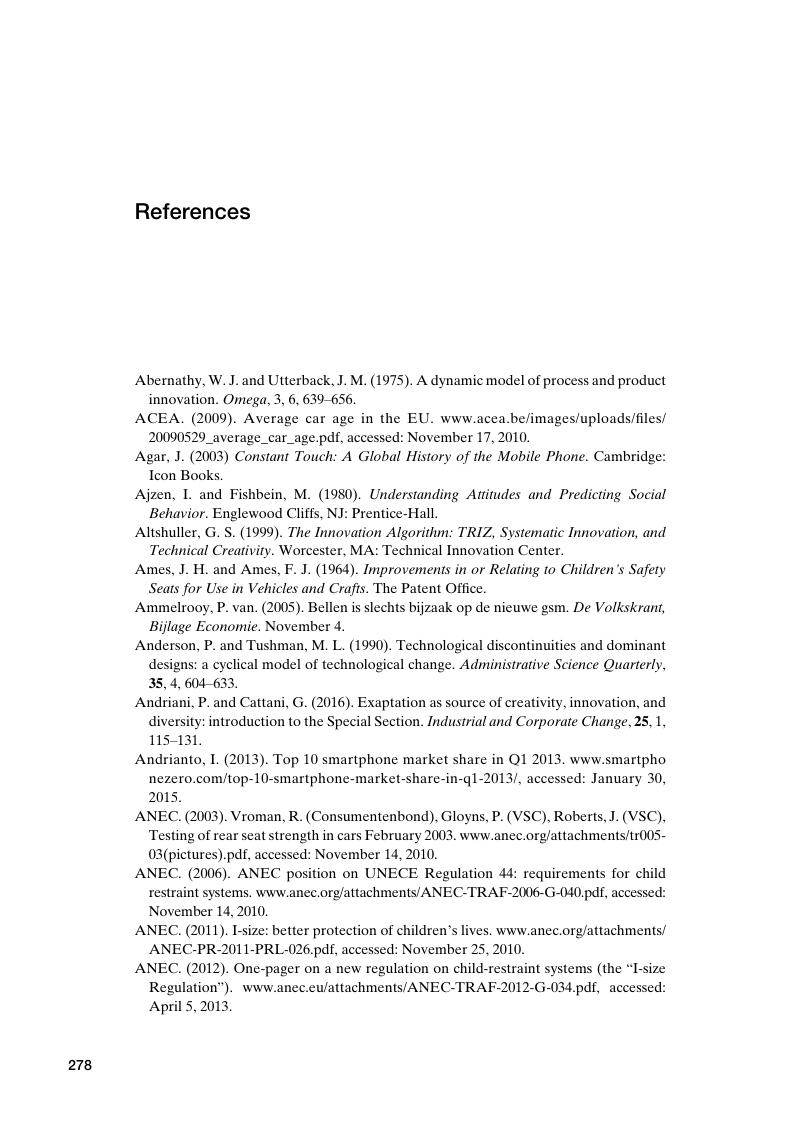Book contents
- On the Origin of Products
- On the Origin of Products
- Copyright page
- Contents
- Figures
- Preface
- Acknowledgements
- 1 On the Origin of Products
- 2 Technological Innovation as an Evolutionary Process
- 3 Lineage
- 4 Product Evolution
- 5 Evolutionary Product Development: Product Phases
- 6 Retrospective Case Surveys Based on Product Phases
- 7 Retrospective Case Study of General Lighting Solutions and the Compact Fluorescent Lamp
- 8 Retrospective Case Study of the Child Restraint System
- 9 Example Showing the Application of the Theory in the Work of Maarten Michel
- 10 Abstracts of the Most Important Theories Used in This Book
- 11 Conclusion: Evolution in Products
- Appendix Student, Product, Year, and Number of Times Researched
- References
- Index
- References
References
Published online by Cambridge University Press: 21 December 2017
- On the Origin of Products
- On the Origin of Products
- Copyright page
- Contents
- Figures
- Preface
- Acknowledgements
- 1 On the Origin of Products
- 2 Technological Innovation as an Evolutionary Process
- 3 Lineage
- 4 Product Evolution
- 5 Evolutionary Product Development: Product Phases
- 6 Retrospective Case Surveys Based on Product Phases
- 7 Retrospective Case Study of General Lighting Solutions and the Compact Fluorescent Lamp
- 8 Retrospective Case Study of the Child Restraint System
- 9 Example Showing the Application of the Theory in the Work of Maarten Michel
- 10 Abstracts of the Most Important Theories Used in This Book
- 11 Conclusion: Evolution in Products
- Appendix Student, Product, Year, and Number of Times Researched
- References
- Index
- References
Summary

- Type
- Chapter
- Information
- On the Origin of ProductsThe Evolution of Product Innovation and Design, pp. 278 - 291Publisher: Cambridge University PressPrint publication year: 2018

